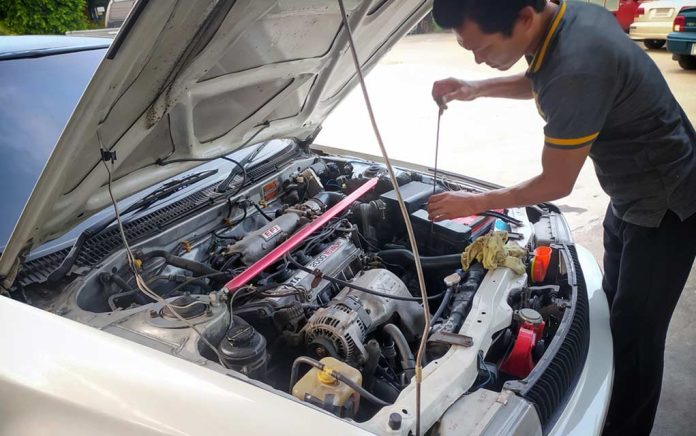(SurvivalDaily.com) – Food is stockpiled and hidden, extra water supply is up and running, plenty of ammo carefully stored away and all the perimeter alarms have been made. You are all set for when SHTF. Or, so you think. What about your survival vehicle? Is it up to par? When is the last time you gave it a good once over?
Even without an imminent end of the world scenario, it’s always a good idea to check on your vehicle to ensure it is ready for the road. After all, a broken down car in the middle of nowhere (or in the chaos of busy traffic) can quickly become just as dangerous as facing a large-scale disaster.
Let’s run through this checklist and look for anything you may have forgotten. If you are not mechanically inclined, take your vehicle to a trusted shop or mechanic to have it inspected.
- Inspect all fluid levels. Most people think that means their coolant, transmission and oil. Don’t forget your vehicle also relies on power steering fluid and brake fluid to keep it running smoothly. Last thing you need in the middle of a disaster is to be without brakes. Now that those are all topped off, and maybe even changed out completely let’s move on.
- Change out your air filter. Most people, unless they are mechanics, don’t consider this easy task but it should really be done once a year or every 12,000 miles for optimal performance. Easy enough, on to the next.
- Check out those tires! Do they need air? Is there wear to the tread? So much so you are starting to see wires or can you see Lincoln’s head when you put a penny upside down in the grooves? If you can see his head, it’s definitely time for new tires. And while you’re at it don’t forget to check the shape of your spare. Is it even still holding air? Tires are all set, let’s see what else needs to be done.
- Check your lights. By this I mean ALL lights — headlights, turn signals, brake lights. Do they all work? Do you need to change a bulb or two? I bet you didn’t consider stocking up on these. Sure wouldn’t hurt to have some extras in case one should go out.
- Inspect your cooling system. You already checked your coolant level but it would be a rough situation if a hose blew. Check all of them. Any wear and tear, leakage or loose clamps? Now would be the time to take care of these issues instead of down the road.
- Look at your spark plugs and wires. Let’s make sure that engine runs as efficiently as it possibly can. How long has it been since you put new spark plugs and spark plug wires on? Most should be replaced after 20,000 to 40,000 miles.
- Examine your serpentine belts. This is fairly easy to do. Are they loose, do they have cracks? Replace them. For added safety, even if they have none of these signs replace them. I mean really, when was the last time you considered the belts, they are probably beyond their life expectancy.
- Get new windshield wipers. The last thing you want to worry about is whether or not you can see when driving. Especially if you need to head out quickly. Personally, unless I have just put new ones on I would simply replace them. Done and over with. Lights are good and there will be no visual impairments whatever the weather may toss your way.
- Test your battery. This supplies all the electrical energy your vehicle needs. Check your cables to see if any are loose. Are they getting a good connection with the terminals? If the terminals have mineral build-up on them, clean them with a wire brush. Test the battery voltage with a multimeter. It should read at least 12.4-12.7 volts with vehicle off and 13.7-14.7 with vehicle running. Anything lower than that and you should have the battery tested outside of the vehicle; it could be bad. If it shows good, have your alternator tested.
- Inspect your brake system. You have already checked your fluid but now you need to inspect your pads, rotors and lines. Are your pads thin? If so, change them. Do your rotors have grooves in them? Change those too or your pads will wear down faster and the vehicle is not braking to the best of its ability. Are those lines rusted? Maybe you found a slight leak — change it. The last thing you want is to be getting out of dodge just to find out you have no brakes.
Your survival vehicle is all set to go. Now, you can take a sigh of relief knowing you have prepared everything you need when SHTF. Whether it does or not remains to be seen… but at least you know you are well equipped.
~Copyright 2021, SurvivalDaily.com

















